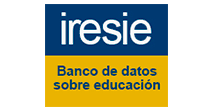STYLES OF USE OF VIRTUAL SPACE: HOW DOES ONE LEARN AND TEACH VIRTUALLY?
DOI:
https://doi.org/10.5216/ia.v34i1.6542Abstract
The guidelines on styles of virtual space usage make it easier to understand the questions raised about how one learns using the virtual in the world of technologies and what characteristics and references directly influence the educational and learning processes. To carry out this research, the theory of learning styles is used, which analyzes each individual’s style of learning, thereby making an understanding of the usage potential of technology easier for the educational and learning process. With this reflection as an analysis plank, this article presents the results of the research undertaken, whose aim was to identify how people use and learn in virtual space and which styles of learning could be considered in this new space. Qualitative and quantitative research methodologies were used with statistical analyses and elaborations which contributed to and proved the scientificity of the research. The results focus on characteristics and elements which help to understand how pedagogy can build a pedagogical practice of education and learning with virtual space.Downloads
Downloads
Published
How to Cite
Issue
Section
License
Inter-Ação uses the Creative Commons Attribution 4.0 License for Open Access Journals (Open Archives Initiative - OAI) as the basis for the transfer of rights. Open access means making documents available on the Internet free of charge, so that users can read, download, copy, distribute, print, search, or link to the full text of documents, process them for indexing, use them as input data for software programs, or use them for any other lawful purpose, without financial, legal, or technical barriers.
Authors publishing in this journal agree to the following conditions:
1) Authors retain copyright and grant the journal the right of first publication, with the work simultaneously licensed under the Creative Commons Attribution License, which permits redistribution of the work with attribution and first publication in this journal.
2) Authors are permitted to enter into additional, separate agreements for non-exclusive distribution of the version of the work published in this journal (e.g., for publication in an institutional repository or as a book chapter), with attribution and first publication in this journal.
3) Authors are permitted and encouraged to publish and distribute their work online (e.g. in institutional repositories or on their home page) at any time before or during the editorial process, as this may generate productive changes as well as increase the impact and citation of the published work.















